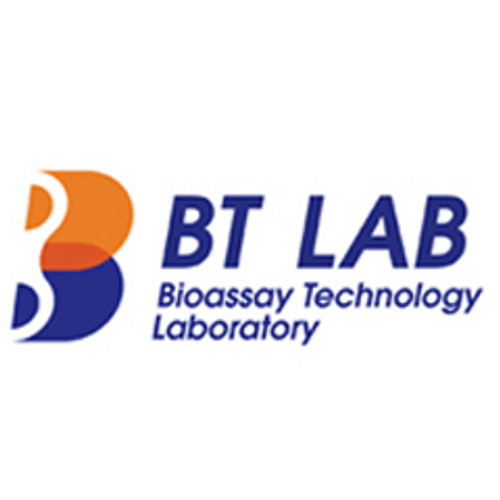Product Description
Human Acetylcholinesterase (ACHE) ELISA Kit | AE23415HU | Abebio
Species Reactivity: Human (Homo sapiens)
Abbreviation: ACHE
Alternative Name: ARACHE; N-ACHE; YT; OTTHUMP00000211347|OTTHUMP00000211349|OTTHUMP00000211356|acetylcholinesterase|apoptosis-related acetylcholinesterase
Application: ELISA
Range: 3.12-200 ng/mL
Sensitivity: 1.21 ng/mL
Intra-Assay: ≤4.1%
Inter-Assay: ≤7.5%
Recovery: 0, 97
Sample Type: Serum, Plasma, Other biological fluids
Detection Method: Sandwich
Analysis Method : Quantitive
Test Principale: This assay employs a two-site sandwich ELISA to quantitate ACHE in samples. An antibody specific for ACHE has been pre-coated onto a microplate. Standards and samples are pipetted into the wells and anyACHE present is bound by the immobilized antibody. After removing any unbound substances, a biotin-conjugated antibody specific for ACHE is added to the wells. After washing, Streptavidin conjugated Horseradish Peroxidase (HRP) is added to the wells. Following a wash to remove any unbound avidin-enzyme reagent, a substrate solution is added to the wells and color develops in proportion to the amount of ACHE bound in the initial step. The color development is stopped and the intensity of the color is measured.
Product Overview: Acetylcholinesterase is an enzyme that degrades (through its hydrolytic activity) the neurotransmitter acetylcholine, producing choline and an acetate group. It is mainly found at neuromuscular junctions and cholinergic synapses in the central nervous system, where its activity serves to terminate synaptic transmission. AChE has a very high catalytic activity mdash; each molecule of AChE degrades about 5000 molecules of acetylcholine per second. The choline produced by the action of AChE is recycled mdash; it is transported, through reuptake, back into nerve terminals where it is used to synthesize new acetylcholine molecules.Acetylcholinesterase is also found on the red blood cell membranes, where it constitutes the Yt blood group antigen.
Stability: The stability of ELISA kit is determined by the loss rate of activity. The loss rate of this kit is less than 5% within the expiration date under appropriate storage condition. The loss rate was determined by accelerated thermal degradation test. Keep the kit at 37°C for 4 and 7 days, and compare O.D.values of the kit kept at 37°C with that of at recommended temperature. (referring from China Biological Products Standard, which was calculated by the Arrhenius equation. For ELISA kit, 4 days storage at 37°C can be considered as 6 months at 2 - 8°C, which means 7 days at 37°C equaling 12 months at 2 - 8°C) .
 Euro
Euro
 USD
USD
 British Pound
British Pound
 NULL
NULL








